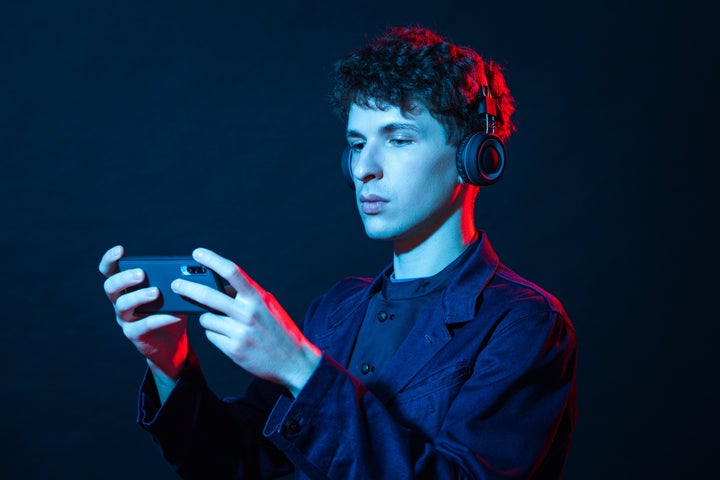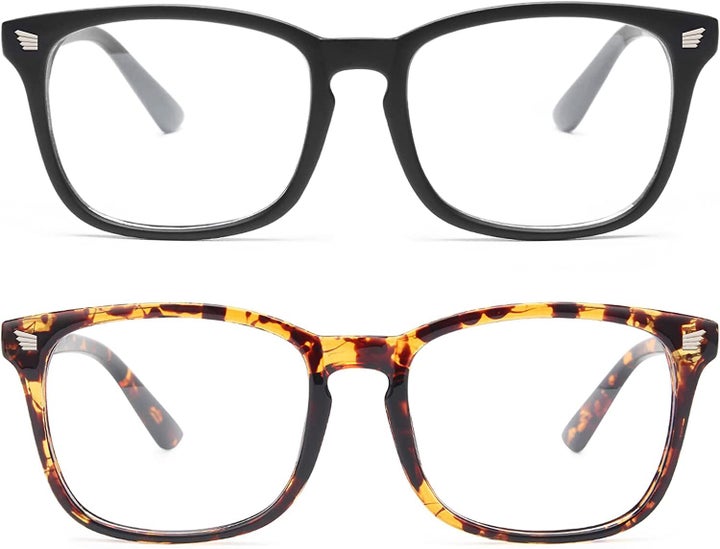
Let’s face it: We’ve all spent a few hours too many poring over our laptop screen, or glued to our phones scrolling endlessly through TikTok or Instagram. As deeply engaged as we are in the moment, we’re also exposing ourselves to blue light emissions that can be damaging in the long run.
Blue light is a type of visible light that is emitted by electronic devices like smartphones, tablets and computers. Exposure to blue light can disrupt the body’s natural sleep cycle and cause eye strain, headaches, premature skin ageing and fatigue.
Reducing exposure is especially helpful for people who spend a lot of time in front of screens or have trouble sleeping at night, said Dr. Danielle Kelvas, chief medical advisor at Sleepline.
“Blue light has a short wavelength and high energy, which means it can penetrate deep into the eye and reach the retina. This can disrupt our circadian rhythm, the natural sleep-wake cycle that regulates our sleep patterns,” she explained. “Exposure to blue light at night can suppress the production of melatonin, a hormone that helps us fall asleep, and can make it harder to get a good night’s sleep.”
So, besides putting devices away earlier or logging off at a reasonable time, what’s the solution? We spoke to experts on ways to minimise the exposure of blue light and ways to change the settings on our devices to minimise the negative effects on their sleep and eye health.
1. Built-In Blue Light Options In Your Smartphone Or Device
Many devices, including smartphones and tablets, have built-in options for triggering anti-blue light features. These options, which typically adjust the colors on the screen to warmer hues to filter the blue light, are often called “Night Shift” or “Night Mode.”
If you’re an iOS user, go to settings, then select Display & Brightness and scroll down to Night Shift. Switch it from off to on to activate this feature. You can also schedule automatic activation of the anti-blue-light feature and even adjust the color temperature from “less warm” to “more warm” depending on your preference.

If you’re an Android user, you can enable the built-in blue light feature by going to Settings and tapping on Display. There, you will see a setting named “Night Light” or “Blue Light” that is adjustable; you can also schedule when you want to turn it on and off.
2. Anti-Blue Light Glasses And Screen Protectors
There are also gadgets that can help reduce blue light exposure.
According to Kelvas, one way to reduce blue light is to use blue-light-filtering glasses, which according to a 2019 study can also help treat sleep disorders in people with Parkinson’s disease. But there are general benefits to wearing these glasses, too, including reduced eye strain and eye damage. Plus, they’re affordable.

For other devices such as laptops and tablets, Gulrez Tyebji, managing director of sustainable tech marketplace Reebelo Australia and New Zealand, emphasised the need for anti-blue light screen protectors that block excessive levels of blue light.
A 2020 study found that using screen protectors, in addition to built-in device settings that reduce brightness, can reduce up to 99.8% of blue light.
“Anti-blue light screen protectors are vital because they counter the negative effects blue light and electro-magnetic fields have on our health, according to several studies,” he said.
These screen protectors are also available online and come in various sizes depending on the type of tablet or laptop you have.

3. Blue-Light-Reducing Software Or Apps For Additional Support
If adjusting your device’s settings isn’t enough, or your devices don’t offer internal options, you can also download software specifically for reducing blue light.
For example, Twilight, an app available in the Google Play store, forces your device’s screen to adapt to the time of the day. Essentially, it uses your device location to look up sunrise and sunset times to determine when to shade your screen, and usually applies a red filter to the device, which causes less eye strain and is less damaging than blue light.
Similarly, the software F.lux allows Apple users to reduce the brightness level of their laptops or computers below the minimum level. The app will automatically adjust the phone’s brightness according to the time of day and location.
The American Optometric Association and other health authorities continue to study other ways blue light may pose a health risk, but for now, adjusting your setting and using eyeglasses or protectors is a great precautionary measure to reduce exposure.